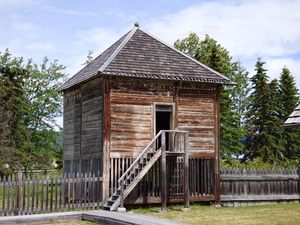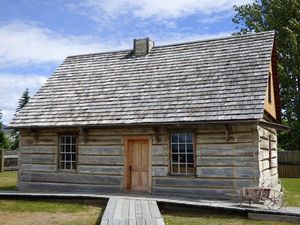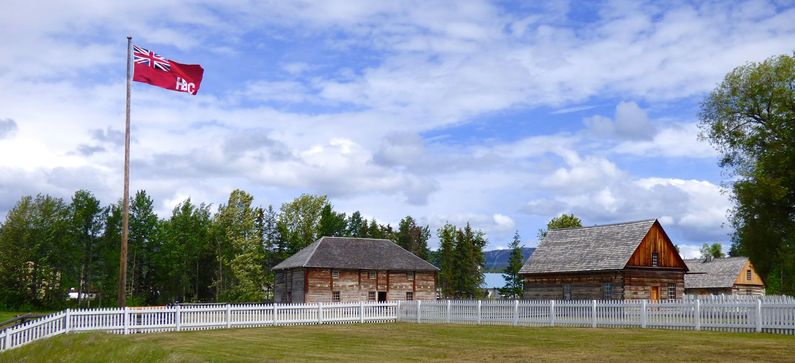Fort St. James
| More information at Warlike, Wikidata, Wikipedia
Fort St. James (1821-1952) - Originally established as Lake Stuart Post by Simon Fraser for the North West Company in 1806. The fort was renamed Fort St. James when the North West Company and the Hudson's Bay Company (HBC) merged in 1821 under the HBC name. The fort was rebuilt four times and continued as an important trading post up until 1952. The post was located on the southeastern shore of Stuart Lake at the confluence of the Stuart and Necoslie rivers. Closed in 1952.
Fort St. James History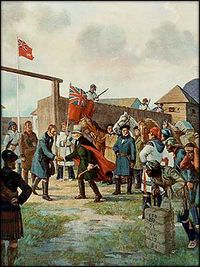 Originally established at the south end of Stuart Lake as Lake Stuart Post by Simon Fraser for the North West Company in 1806. The fort was renamed Fort St. James when the North West Company and the Hudson's Bay Company (HBC) merged in 1821 under the HBC name. It served as the headquarters for the HBC's New Caledonia District. The fort was built as a trading post and as such it provided the local indigenous peoples access to trade goods in return for fur pelts. The trade goods sought after by the native peoples included the trademark HBC blankets, cloth, boots, iron cookware, guns, ammunition, traps, saws and liquor. In the early years the HBC displayed the prices of these items in "made beaver" pelts, pelts that had been stretched and cured. A shotgun might be priced at 15 "made beaver". In many places the HBC was the only source of retail goods for the local populations. The fort was rebuilt four times and continued as an active trading post up until 1952. Chief Factor Roderick MacFarlane arrived in 1887 and he found the buildings in an unsatisfactory state. He instigated a program that moved and rebuilt the buildings and built sturdy boardwalks between them. Most of the buildings from that period have survived and have been restored. The exception is the trade store which burned down in modern times and was recreated in 1975-1976. The Chief Factor's house underwent many changes over the years but has been restored to the period when Chief Factor A.C. Murray and his family occupied the house (1886). Closed in 1952.
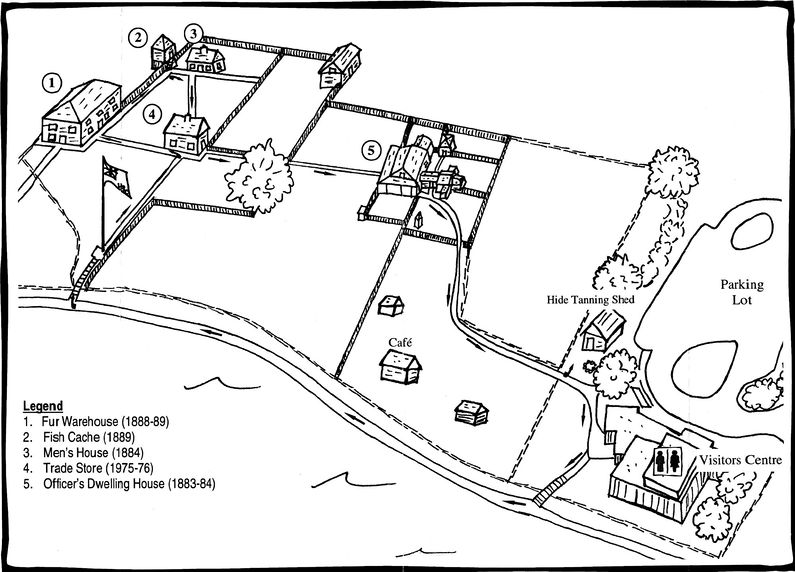
Current StatusMust See! Fort St. James National Historic Site of Canada, seasonally open (1 June to 22 September). Entrance Fee. Buildings and attractions:
See Also: Sources: Links:
Visited: 20 jun 2014
| ||||||
